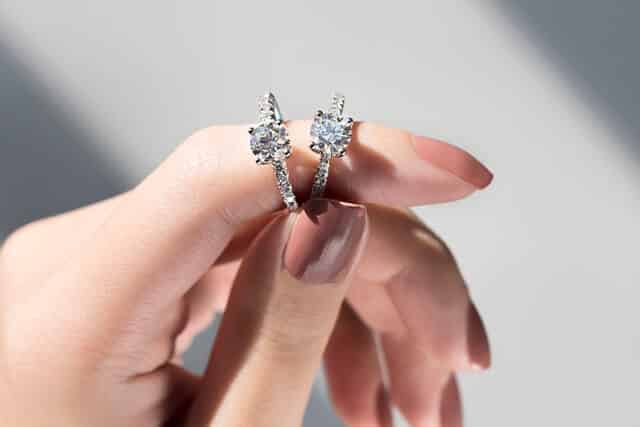Introduction
In the world of diamonds, two contenders have emerged: lab-grown diamonds and natural diamonds. Each offers unique qualities and characteristics that cater to different preferences and values. Let’s dive into the details to understand their differences and similarities, helping you make an informed choice for your next diamond purchase.
Formation Process
Natural Diamonds Natural diamonds are formed deep within the Earth’s mantle under intense pressure and heat over millions of years. These diamonds are brought to the surface through volcanic eruptions and mined thereafter, a process that impacts the environment significantly.
Lab Diamonds In contrast, diamantes de laboratorio vs diamantes naturales are created in controlled environments that mimic the natural diamond-growing process. Two primary methods are used: High Pressure High Temperature (HPHT) and Chemical Vapor Deposition (CVD). These methods replicate the natural conditions but accelerate the timeframe to a matter of weeks or months.
Quality and Characteristics
Physical Properties Both lab-grown and natural diamonds share almost identical physical and chemical properties. They have the same hardness on the Mohs scale, brilliance, and fire. The main difference lies in their origin.
Clarity and Inclusions In terms of clarity, both types can exhibit similar levels of purity. Inclusions are natural occurrences in diamonds, whether mined or grown in a lab, and their visibility depends on the quality of the cut.
Cost Comparison
Factors Affecting Price The cost of diamonds, whether natural or lab-grown, is influenced by factors such as size, cut, color, and clarity. However, lab-grown diamonds typically cost less than natural diamonds of comparable size and quality due to lower production costs.
Ethical Considerations
Environmental Impact Mining for natural diamonds has a significant environmental footprint, including land disturbance and water usage. Lab-grown diamonds, while not entirely without environmental impact, generally have a smaller footprint and are considered more sustainable.
Social and Labor Practices Ethical concerns also surround the mining industry, including issues related to labor practices and community impact. Lab-grown diamonds offer an alternative for consumers concerned about these issues.
Popularity and Market Trends
Consumer Preferences The shift towards lab-grown diamonds is driven by factors such as cost-effectiveness, ethical considerations, and their identical physical properties to natural diamonds.
Industry Growth The market for lab-grown diamonds has seen substantial growth as more consumers and jewelers embrace them as a viable option.
Certification and Authentication
Standards and Certifications Both natural and lab-grown diamonds can be certified by reputable gemological institutes like GIA (Gemological Institute of America) or IGI (International Gemological Institute). Certification ensures that the diamond meets industry standards for quality and authenticity.
Misconceptions and Myths
Common Misconceptions There are misconceptions surrounding man made diamonds, including doubts about their authenticity and value compared to natural diamonds. However, these perceptions are gradually being dispelled as awareness grows.
Longevity and Durability
Durability Comparison Both types of diamonds are durable and suitable for everyday wear. They resist scratching and retain their brilliance over time with proper care and maintenance.
Aesthetic Appeal
Beauty and Visual Appeal Lab-grown diamonds exhibit the same sparkle, brilliance, and fire as natural diamonds. Their aesthetic appeal is indistinguishable to the naked eye, making them a popular choice for jewelry.
Buying Guide
Factors to Consider When choosing between lab-grown and natural diamonds, consider factors such as your budget, ethical priorities, and personal preferences regarding diamond origin.
Sustainability
Environmental Impact Lab-grown diamonds generally have a lower carbon footprint and are considered a more sustainable choice compared to mined diamonds.
Investment Value
Resale Value While natural diamonds have historically held their value well, lab-grown diamonds are also gaining recognition for their investment potential, especially as consumer acceptance grows.
Conclusion
In conclusion, both lab-grown and natural diamonds offer unique benefits and considerations. Your choice should align with your values, budget, and desired diamond characteristics. Whether you opt for the natural allure of mined diamonds or the ethical and cost advantages of lab-grown diamonds, both types sparkle brilliantly and hold enduring value.

